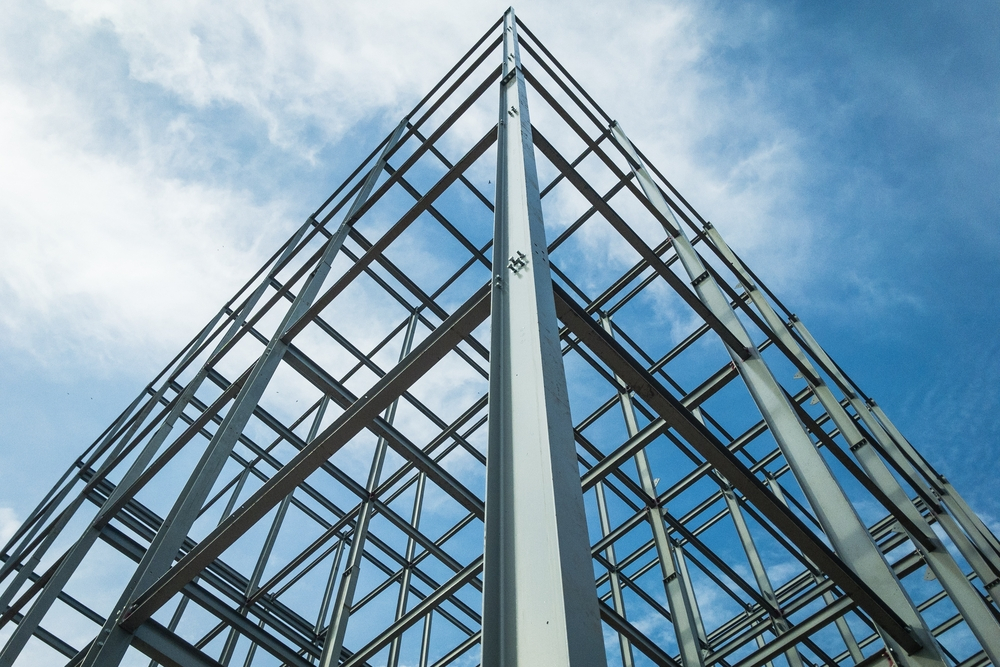Why Steel Is Still Used In Construction
Posted on October 14, 2021 at 04:30 PM

The use of steel in construction has a long history, making it a durable, cheap, and convenient material to work with. Learn about the history of this useful element to get an idea about how it emerged, where it came from, and where it is used today.
How Constructions Often Use Steel?
Steel is heavy, but thankfully steel construction has special properties that make it the go-to material for many types of buildings. These include fire resistance, ductility, longevity, and increased weight to minimize the risk of failures. Steel offers many advantages in construction because it is typically sturdy and less flammable than other materials. Even if cracks do happen, steel is often strong enough to support its own weight. The availability of steel outweighs the problems related to these disadvantages, which makes it the go-to material people pick for use in construction projects. Today, construction workers have a variety of tools for using materials to build things. In the old days, builders would work with stone blocks and pieces of metal as they used advanced equipment to cut, shape or weld those materials. Steel will always have a place in construction, even if it has been making some tough competition lately from concrete as a new material replacing steel.Mechanical Properties of Steel
Affectiveness with Ductility
The carbon content of steel may be changed to make it more malleable and ductile. Steel's high malleability makes it ideal for use in the building of sports fields, homes, skyscrapers, and other structures that need flat surfaces.
For usage as Rebar (reinforced steel bar) in buildings, its high ductility enables it to be pulled into wires or thin cylinders.
The ability to withstand and overcome adversity
The most essential characteristic for a civil engineer to evaluate is yield strength. Rebars used in construction are engineered to have very high yield strengths, allowing them to resist massive loads and pressures while remaining completely intact.
The steel used in construction is prized for its brittle fracture resistance, which makes it a difficult material to work with. Exceptionally high impact energy may be applied to steel with great toughness before it breaks.
Thermodynamic Characteristics
The steel used in building construction is well-known for its excellent heat conductivity. To soften and ultimately melt, it must be subjected to enormous thermal loads because of its high mass density and specific heat capacity.
Cost-effectiveness
Steel is less expensive when purchased in bulk than many of the newer materials being used to replace it. Due to the simplicity of production, steel has a cheap cost per unit. In addition, a lower unit cost lowers the total cost of the building being built.
Management
Steel is utilized in the construction of roofs and walls as well as rebar. It has a cheap maintenance cost because of its excellent corrosion resistance. Unlike engineered wood, which is utilized in a few nations to substitute steel, rebars seldom fail unless in the event of a natural disaster.
How steel is utilized in buildings and infrastructure
The opportunities for utilizing steel in structures and foundation are boundless. The most widely recognized applications are recorded beneath.
For buildings
Primary segments: These give a solid, hardened edge for the structure and make up 25% of the steel used in structures.
Supporting bars: these add elasticity and firmness to cement and make up 44% of steel use in structures. Steel is utilized on the grounds that it ties well to concrete, has a comparative warm extension coefficient and is solid and generally practical. Built up concrete is additionally used to give profound establishments and cellars and is presently the world's essential structure material.
Sheet items: 31% is in sheet items like material, purlins, inward dividers, roofs, cladding, and protecting boards for outside dividers.
Non-primary steel: steel is likewise found in numerous non-underlying applications in structures, for example, warming and cooling gear and inside ducting.
Inner apparatuses and fittings like rails, racking and steps are likewise made of steel.
For infrastructure
Transport organizations: steel is needed for spans, burrows, rail tracks and in developing structures like powering stations, train stations, ports and air terminals. Around 60% of steel used in this application is as rebar and the rest is segments, plates and rail track.
Utilities (fuel, water, power): more than half of the steel utilized for this application is in underground pipelines to circulate water to and from lodging, and to disseminate gas. The rest is essentially rebar for power stations and siphoning houses.
Conclusion
The traditional steel reinforcing bar is still widely used in construction because of its strength-to-weight ratio, durability, and versatile design. It can be welded or braided to different shapes or profiles for the particular needs of the project at hand. Grades of steel also include structural stair bars, columns, fencing/chain link gates, beam floor joists, rebars in bent-arm pile foundations, tie rods used in pavements, and parking decks just to name a few. When we think about steel, we traditionally think of engineering and heavy construction. Though we do not hear as much about the use of steel in the modern-day, it is important to understand why it still has a place. Despite advancements in safety, speed of construction, and lower cost, steel is still one of the most widely used materials in construction. Steel can control the temperature better than polymers and resists corrosion better than plastics.
At Amardeep Steel Centre, we provide steel products that abide by reliable quality standards, that will benefit your purpose for any desired requirement. Get in touch with us for more information.